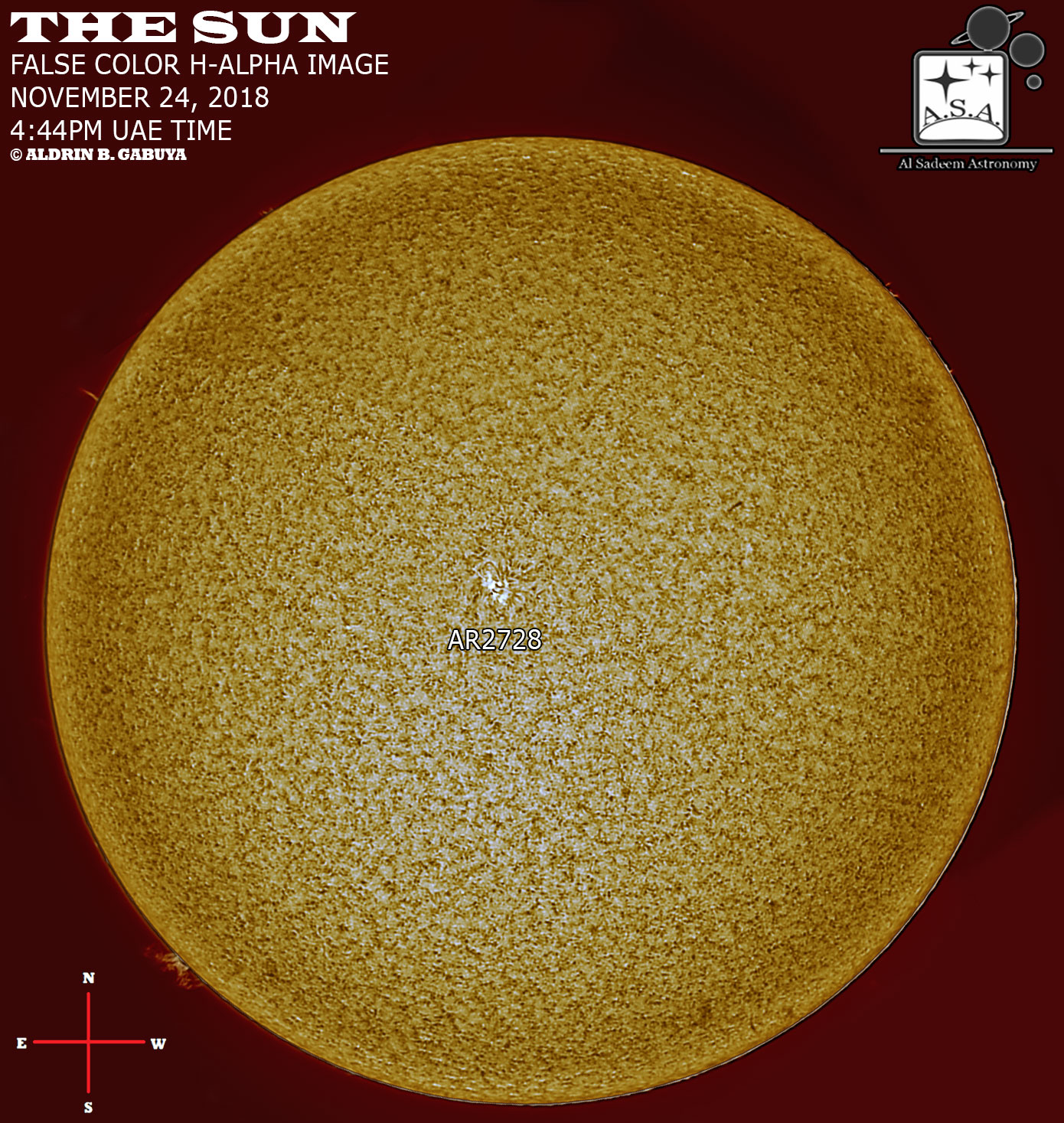Here are today’s solar images taken from Al Sadeem Observatory, November 24, 2018.
The sky was mostly clear with intermittent light to moderate winds making the seeing and transparency average at the time these images were taken.
A new bipolar sunspot region has emerged at the near central region of the Sun’s disk and was recently designated as AR2728 (Modified Zurich/Mcintosh sunspot configuration: Bxo/beta) by space weather agencies. At this point, it was relatively inactive; produced a weak B-class flare based on space weather agency records. The latest sunspot number (based on visual count and Wolf number calculation) is 15. A huge eruptive hedgerow prominence at the southeastern limb and several tiny ones, as well as the associated plage of AR2728, and some small filaments across the disk were distinctively captured in H-alpha imagery.
Space weather agencies* forecast solar activity to remain at very low levels with chances of weak X-ray fluxes or flares ranging up to B-class (possibly up to isolated C-class) intensity, mainly from AR2728. The extent of the frequency and intensity of the Sun’s activity will highly depend on the magnetic flux fluctuations happening in the visible ARs in the coming days. Close monitoring is being conducted by numerous space weather agencies for any significant development.
Equipment used are Skywatcher 120mm refractor telescope with Baader filter and unmodified Canon EOS 1D Mark IV DSLR camera for visible imagery and Lunt H-alpha solar telescope and ZWO120MM CMOS camera for H-alpha imagery, mounted on Skywatcher EQ6 Pro. Pre-processing of visible solar images was performed in PIPP, stacking in Autostakkert, slight wavelet adjustments in Registax 6 and post-processing in Adobe Photoshop CC.
*Technical reports courtesy of Solar Influence Data Center (SIDC), NOAA-Space Weather Prediction Center (NOAA-SWPC)








